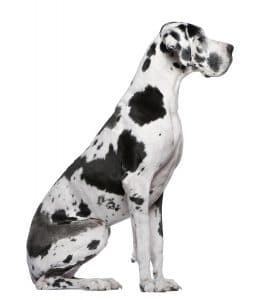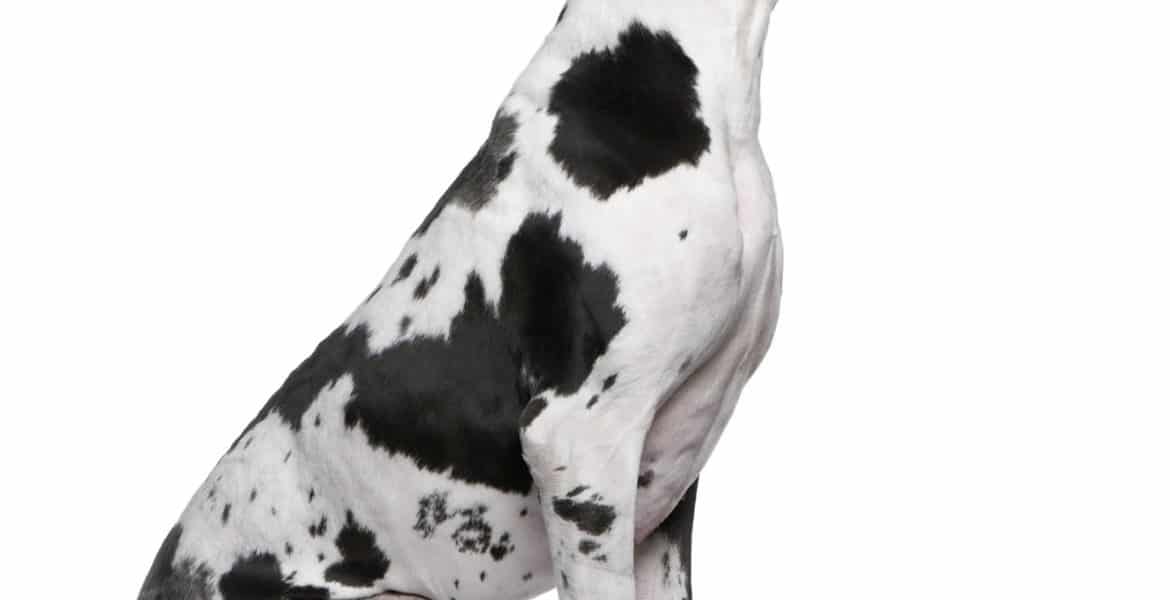
History
Known as “the Apollo of all dogs,” the Great Dane is an ancient breed dating back to 3000 BC Egypt. The Dane we know today was developed not in Denmark but in Germany, where it was used for hunting wild boar. The name can be traced to the 18th century, before which the breed was likely referred to as “Danish Dog”. In the late 19th century, Germans began calling the hound “Deutsche Dogge.” In 1965, the Great Dane was named the state dog of Pennsylvania, it is also the subject of the famous Scooby Doo cartoon and the Marmaduke comic strip.
Physical Attributes
Great Danes fall into the “giant dog” category, standing between 28 to 32 inches tall and weighing 125-180 pounds. They have a square, deep-chested build, a long, rectangular head, dark eyes and a black nose. The ears are either folded or cropped upright, and the body is strong, sturdy and well-balanced. Their long tail is set high and reaches the hocks. The coat is short and thick, and can be blue, harlequin, black and white, brindle or fawn in colour, there are 6 Kennel Club recognised colours in the breed, and over 100 other colours which aren’t recognised by the Kennel Club. Merle and chocolate also occur but are not recognised colours in the breed. The average lifespan of a Great Dane is 8 to 10 years.
Great Danes are average shedders. They are easy to groom and should be brushed twice a week, particularly to avoid the necessity of bathing, which can be quite difficult due to its size. Puppies are clumsy and playful and require moderate but regular exercise. Over-exercise and rough play should be avoided while the puppy is growing. Adult dogs do well with brisk, long walks every day in addition to other moderate activity.
Personality
Early and continued socialization is essential to keep this giant dog in check, and owners should learn to control the dog early on. Great Danes need confident, firm leaders and continued training. Although they are a very good-natured breed, their large size and youthful energy make this necessary. Puppies and young dogs should be supervised with young children, and children in turn should be taught to treat the gentle giant with respect. Danes are not dog-aggressive and get along well with other pets.
Great Danes are prone to a number of health problems including bloat, cancer, cardiomyopathy, hip dysplasia, tumours and wobbler’s syndrome.


